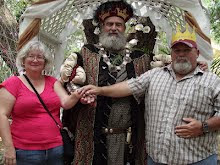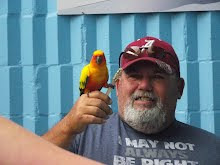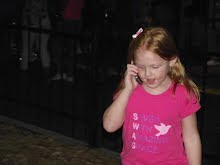As one of the world's oldest holidays, Halloween is still celebrated today in several countries around the globe, but it is in North America and Canada that it maintains its highest level of popularity. Every year, 65% of Americans decorate their homes and offices for Halloween...a percentage exceeded only by Christmas. Halloween is the holiday when the most candy is sold and is second only to Christmas in terms of total sales.
Austria
In Austria, some people will leave bread, water and a lighted lamp on the table before retiring on Halloween night. The reason for this is because it was once believed such items would welcome the dead souls back to earth on a night which for the Austrians was considered to be brimming with strong cosmic energies.
Belgium
The Belgians believe that it is unlucky for a black cat to cross once's path and also ulucky if it should enter a home or travel on a ship. The custom in Belgium on Halloween night is to light candles in memory of dead relatives.
Canada
Modern Halloween celebrations in Canada began with the arrival of Scottish and Irish immigrants in the 1800s. Jack O'Lanterns are carved and the festivities include parties, trick-or-treating and the decorating of homes with pumpkins and corn stalks.
China
In China, the Halloween festival is known as Teng Chieh. Food and water are placed in front of photographs of family members who have departed while bondires and lanterns are lit in order to light the paths of the spirits as they travel the earth on Haloween night. Worshippers in Buddhist temples fashion "boats of the law" from paper, some of which are very large, which are then burned in the evening hours. The purpose of this custom is twofold: as a remembrance of the dead and in order to free the spirits of the "pretas" in order that they might ascend to heaven. "Pretas" are the spirits of those who died as a result of an accident or drowning and whose bodies were consequently never buried. The presence of "pretas" among the living is thought by the Chinese to be dangerous. Under the guidance of Buddhist temples, societies are formed to carry out ceremonies for the "pretas," which includes the lighting of lanterns. Monks are invited to recite sacred verses and offerings of fruit are presented.
Czechoslovakia
In Czechoslovakia, chairs are placed by the fireside on Halloween night. There is one chair for each living family member and one for each family member's spririt.
England
At one time, English children made "punkies" out of large beetroots, upon which they carved a design of their choice. Then, they would carry their "punkies" through the streets while singing the "Punkie Night Song" as they knocked on doors and asked for money. In some rural areas, turnip lanterns were placed on gateposts to protect homes from the spirits who roamed on Halloween night. Another custom was to toss objects such as stones, vegetables and nuts into a bonfire to frighten away the spirits. These symbolic sacrifices were also employed as fortune-telling tools. If a pebble thrown into the flames at night was no longer visible in the morning, then it was believed that the person who tossed the pebble would not survive another year. If nuts tossed into the blaze by young lovers then exploded, it signified a quarrelsome marriage. For the most part however, the English ceased celebrating Halloween with the spread of Martin Luther's Protestant Reformation. Since followers of the new religion did not believe in Saints, they saw no reason to celebrate the Eve of All Saints' Day. However, in recent years, the American "trick or treating" custom, together with the donning of costumes for going door-to-door, has become a relatively popular pasttime among English children at Halloween, although many of the adults (particularly the older generations) have little idea as to why they are being asked for sweets and are usually ill-prepared to accommodate their small and hopeful callers.
Unlike most nations of the world, Halloween is not celebrated by the French in order to honor the dead and departed ancestors. It is regarded as an "American" holiday in France and was virtually unknown in the country until around 1996.
In Germany, the people put away their knives on Halloween night. The reason for this is because they do not want to risk harm befalling the returning spirits.
Germany
The Halloween celebration in Hong Kong is known as "Yue Lan" (Festival of the Hungry Ghosts) and is a time when it is believed that spirits roam the world for twenty-four hours. Some people burn pictures of fruit or money at this time, believing these images would reach the spirit world and bring comfort to the ghosts.
Ireland
In Ireland, believed to be the birthplace of Halloween, the tradition is still celebrated as much as it is in the United States. In rural areas, bonfires are lit as they were in the days of the Celts and children dress up in costumes to spend the evening "trick-or-treating" in their neighborhoods. After the visiting, most people attend parties with neighbors and friends. At these parties, many games are played, including "snap-apple," in which an apple on a string is tied to a doorframe or tree, and players attempt to take a bite out of the suspended apple. In addition to bobbing for apples, parents often arrange treasure hunts with sweets or pastries as the "treasure." The Irish also play a card game where cards are laid face-down on a table with sweets or coins beneath them. When a child selects a card, he or she receives whatever prize might be found there. A traditional food is eaten on Halloween called "barnbrack." This is a type of fruitcake which can be baked at home or store-bought. A muslin-wrapped treat is baked inside the cake which, so it is said, can foretell the future of the one who finds it. If the prize is a ring, then that person will soon be wed and a piece of straw means a prosperous year is forthcoming. Children are also known to play tricks upon their neighbors on Halloween night. One of which is known as "knock-a-dolly," where children knock on the doors of their neighbors but then run away before the door is opened.
Japan
The Japanese celebrate the "Obon Festival" (also known as "Matsuri" or "Urabon") which is similar to Halloween festivities in that it is dedicated to the spirits of ancestors. Special foods are prepared and bright red lanterns are hung everywhere. Candles are lit and placed into lanterns which are then set afloat on rivers and seas. During the "Obon Festival," a fire is lit every night in order to show the ancestors where their families might be found. "Obon" is one of the wo main occasions during the Japanese year when the dead are believed to return to their birthplaces. Memorial stones are cleaned and community dances performed. The "Obon Festival" takes place during July or August.
In Korea, the festival similar to Halloween is known as "Chusok." It is at this time that families thank their ancestors for the fruits of their labor. The family pays respect to these ancestors by visiting their tombs and making offerings of rice and fruits. The "Chusok" festival takes place in the month of August.
Mexico, Latin America And Spain
Among Spanish-speaking nations, Halloween is known as "El Dia de los Muertos." It is a joyous and happy holiday...a time to remember friends and family who have died. Officially commemorated on November 2 (All Souls' Day), the three-day celebration actually begins on the evening of October 31. Designed to honor the dead who are believed to return to their homes on Halloween, many families construct an altar in their home and decorate it with candy, flowers, photographs, fresh water and samples of the deceased's favorite foods and drinks. Frequently, a basin and towel are left out in order that the spirit can wash prior to indulging in the feast. Candles are incense are burned to help the departed find his or her way home. Relatives also tidy the gravesites of deceased family members, including snipping weeds, making repairs and painting. The grave is then adorned with flowers, wreaths or paper streamers. Often, a live person is placed inside a coffine which is then paraded through the streets while vendors toss fruit, flowers and candies into the casket. On November 2, relatives gather at the gravesite to picnic and reminisce. Some of these gatherings may even include tequila and a mariachi band although American Halloween customs are gradually taking over this celebration. In Mexico during the Autumn, countless numbers of Monarch butterflies return to the shelter of Mexico's oyamel fir trees. It was the belief of the Aztecs that these butterflies bore the spirits of dead ancestors.
In Sweden, Halloween is known as "Alla Helgons Dag" and is celebrated from October 31 until November 6. As with many other holidays, "Alla Helgons Dag" has an eve which is either celebrated or becomes a shortened working day. The Friday prior to All Saint's Day is a short day for universities while school-age children are given a day of vacation.
Grand Cayman Islands




































